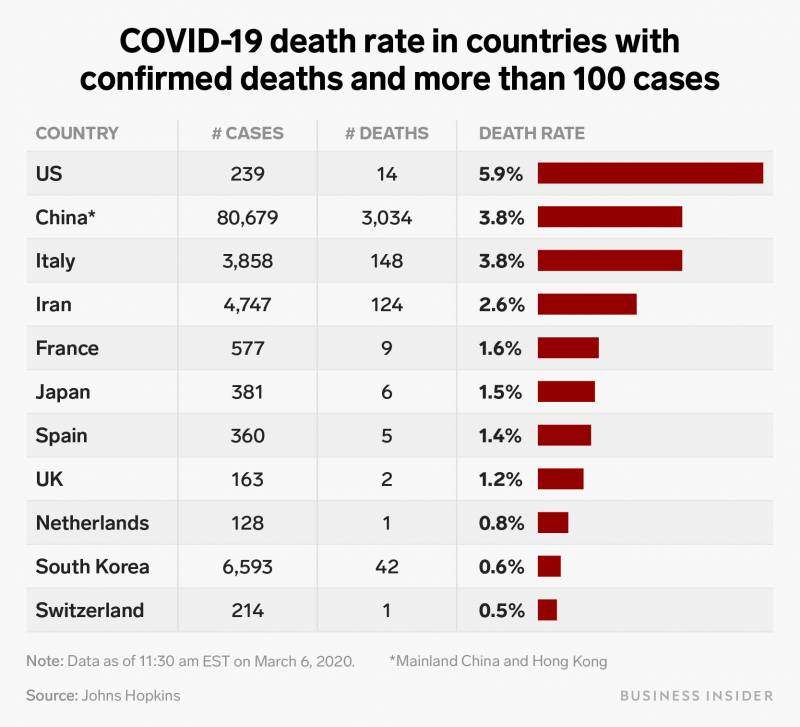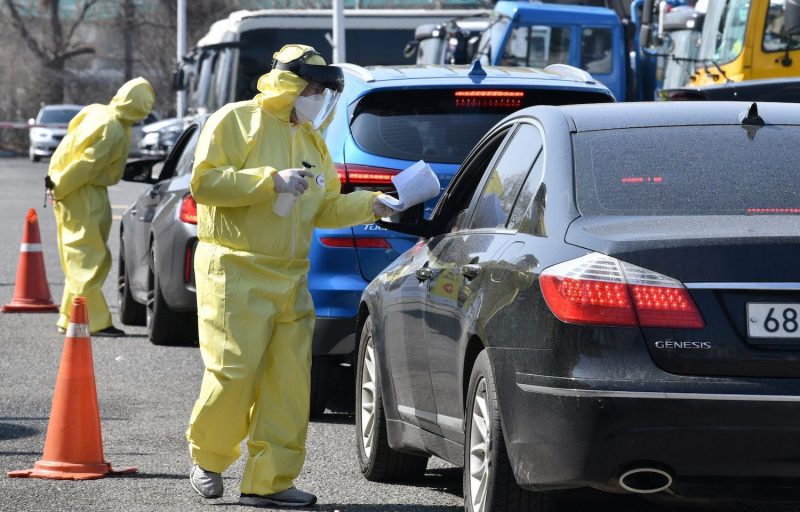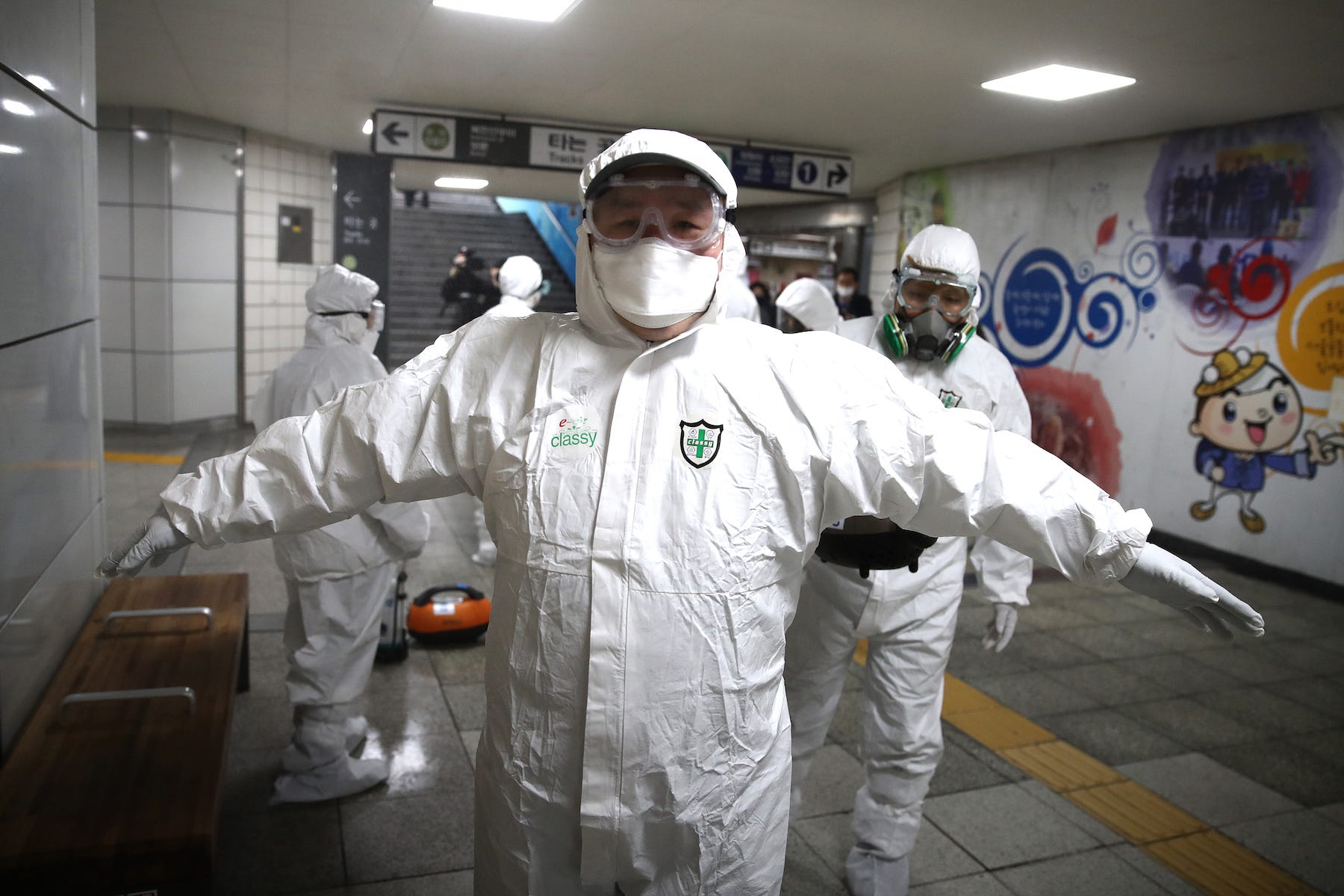- More than 100,000 people have been infected with the new coronavirus and 3,460 have died. About 80% of cases and deaths are in China.
- But the death rate – the number of known deaths out of the total number of confirmed cases – varies widely by country right now.
- Generally, the death rate seems to decrease as more people are tested and cases are confirmed.
- The following chart shows the death rates in countries with confirmed deaths and more than 100 cases.
- Visit Business Insider’s homepage for more stories.
The death rate from the new coronavirus is higher in the US so far than anywhere else in the world. The rate, a basic calculation that divides the number of known deaths by the total number of confirmed cases, was about 6% in the US as of Friday morning. Fourteen Americans have died out of less than 250 confirmed cases.
South Korea, which has the second-highest number of cases outside China, has a death rate that’s one-tenth of that. Out of 6,593 cases, 42 people have died: o.6%.
While this variation between countries may sound concerning, the rate strongly depends on how many people get tested for the virus. In countries like South Korea and China, which have tested hundreds of thousands of people, the death rate is lower than in, say, the US, which has tested less than 2,000.

Given that the outbreak of COVID-19, the disease caused by the coronavirus, is still growing and evolving, and countries' case totals and death tolls are constantly changing, countries' death rates are not static and will continue to fluctuate.
Many health experts predict that death rates overall will decrease as the number of cases rises and the amount of testing increases. South Korea, which has tested more than 140,000 people, offers solid evidence for that prediction so far.
Why more testing could decrease the death rate
Widespread testing could mean a lower death rate because the majority of coronavirus cases - about 80% - are considered mild. But the cases tested and reported first are often those with the most severe symptoms, since those people go to the hospital. Milder cases, on the other hand, could go uncounted or get reported later on.
"If indeed we discover that there are far more cases that are actually being reported, and that one of the primary reasons for this is that we're just not detecting asymptomatic or mild or moderately symptomatic cases that don't end up seeking healthcare, then our estimates for the case fatality rate will likely decrease," Lauren Ancel Meyers, an epidemiologist at the University of Texas at Austin, previously told Business Insider.
Mild cases, she added, "may not make it onto the radar of public health agencies."
Indeed, in the US so far, many people without severe symptoms haven't been tested because of limited testing availability.
The death rate is not the same as your chance of dying

The World Health Organization estimated on Tuesday that the global death rate for the coronavirus is about 3.4%.
The death rate of a disease is different from its mortality rate - the latter is the number of deaths out of the number of people in an at-risk population. A death rate is not a reflection of the likelihood that any given person will die if infected.
According to Brett Giroir, the assistant secretary for health at the Department of Health and Human Services, the best estimates of the overall mortality rate for COVID-19 in the US are between 0.1% and 1%.
Read more:
What to know about the coronavirus outbreak in 9 charts and maps
